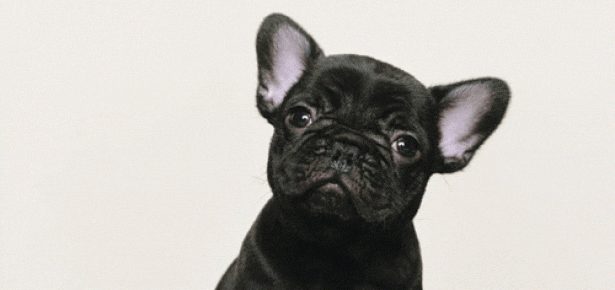Uncategorized
The French Bulldog
Forget the battles of Agincourt, Trafalgar, and Waterloo, and the violent debate over whether croissants or crumpets constitute the superior breakfast. It’s time to turn the page on the international incident that arose when those four Liverpudlean lads forced their oh-so Anglo tongues around “Michelle, ma belle.”
The longstanding rivalry between the British and the French has come to a perfect détente in the sweet, petite French Bulldog. Like shortbread enrobé in chocolate, the stocky, charming dogs with the distinctive bat ears are a case of something wonderful originating in Britain and then given a bit of élan-French flair.
In the early 19th century, British fanciers experimented with breeding a toy-sized Bulldog, a variation that proved popular with the artisan class, particularly the lace-makers of Nottingham. When the Industrial Revolution brought hard times to these artisans, many of them moved to France, taking their miniature Bulldogs with them. The French embraced the little dogs, crossed them with various other breeds, most likely Spanish bulldogs and terriers, and began calling them les Bouledogues Francais. Once the Brits had puzzled out that this meant “French Bulldog,” they were not amused. “There is only one Bulldog and he is British!” was the outraged reaction. Despite this opposition, the name stuck and Frenchies thrived. By the turn of the 20th century, they were la mode on both sides of the Channel and across the Atlantic in the United States, where the newly formed French Bulldog Club of America (FBCA) held its posh 1898 show at the Waldorf-Astoria Hotel in New York City. The Frenchie was at home in all social spheres, from the streets of Paris, where ladies of the night often posed for risqué postcards with their French Bulldogs, to the decks of the Titanic; one unfortunate Frenchie perished with the famous ship, no doubt little consoled by the fact that he was insured for the then-enormous sum of $750.
After the First World War, the breed’s popularity dropped dramatically, and through the middle part of the 20th century, it was considered almost a rare breed. Today, with many people looking for small, shorted-haired, personable dogs that can fit into an urban lifestyle, the French Bulldog is making an astonishing comeback, leaping from 76th to 34th position in American Kennel Club (AKC) registrations over the past ten years. As Frenchies are seen on the arms of celebrities such as Reese Witherspoon, Leonardo DiCaprio, and Nathan Lane, their popularity can only increase.
Favoured colours include brindle (which can be so dark as to seem almost black), fawn or cream, white, and brindle and white. Frenchies should not be more than 28 pounds and, although they would happily convince their owners otherwise, should not be fed so much that they carry excess weight. The face of a Frenchie should be her fortune: round, intelligent eyes, a wrinkled forehead, and large, erect ears set off the extremely short nose and wide, square jaw. The hind legs are longer than the fore, which gives the breed a slightly roached back, and a naturally short and often “screwed” tail should complete the overall silhouette.

The only function of today’s French Bulldog is that of love sponge and comfortable companion and, as such, she should be as the AKC standard describes: “well behaved, adaptable…active, alert, and playful, but not unduly boistrous.” Generally very social with both human and canine friends, she is sometimes a clown and glories in being the centre of attention.
Before rushing out to join the ranks of those won over by the endearing expression and affectionate personality of the Frenchie, prospective owners must recognize that this breed is subject to a number of physical and health challenges.
Because they have big heads, wide shoulders, and narrow pelvises, Frenchies can rarely give birth naturally; Caesarean births are the norm. This means that the puppies are usually expensive compared to some other breeds and that owners should never consider breeding their dogs without a serious commitment of money plus expert knowledge. The owner who wants to breed Sweetums just so that he can have cute puppies around should realize that none of the puppies might survive and he might lose Sweetums as well.
Like all short-faced dogs, Frenchies are particularly sensitive to heat and cold and must not be expected to exercise strenuously under those conditions. The breed is prone to juvenile eye cataracts and premature vertebral disc degeneration, as well as skin irritations between the facial wrinkles and impacted anal glands at, um,the other end. The FBCA includes excellent health information ontheir website in a page titled “A Letter tomy Vet.”
Snorting, wheezing, flatulence, and other natural noises are a part of the breed’s normal physiology, but the true French Bulldog lover will not be put off by any of this. In her book French Bulldog, Muriel P. Lee writes: “When I bought my first Frenchie, my breeder said ‘When you buy a Frenchie, you ask, Does he snore? Does he fart? If the answer is yes to both, you have a good dog.'” Picture the English Bulldog as the iconic British breed and the idea of a “French” Bulldog may seem like a load of tommy-rot. Yet, like the genius who first paired French fries with English cod to create that pinnacle of plebian gastronomy, fish n’ chips, we should revel in this unlikely cross-cultural partnership and declare, “Vive le Bouledogue Francais!”


